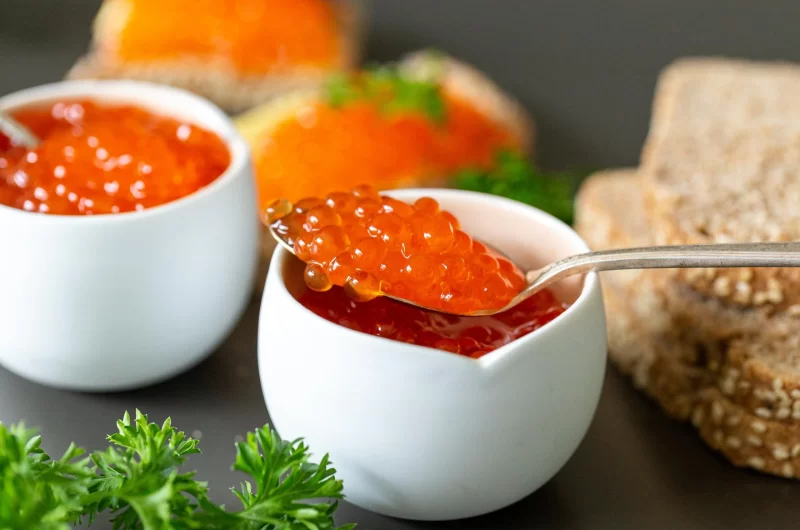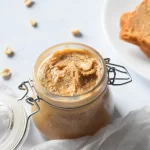Any fancy Russian or Ukrainian dinner has to include an appetizer of ikra (caviar). Growing up, I used to eat the “poor man’s caviar”, or ikra, which is made out of eggplant instead of fish eggs. But, here in Seattle, fish eggs are abundant, cheap and extremely accessible. During salmon fishing season, I make it a point to snag roe whenever I can.
There are plenty of ways to serve salmon caviar, but the most traditional is spread atop a lightly buttered piece of toast. Other serving options include unsalted crackers (don’t buy salted, the caviar is salty enough!) or with Russian pancakes, or blini. As far as garnishes go, fresh herbs, sour cream, crumbled soft-boiled eggs or chopped white onions are all perfect complements.
What is Caviar?
Simply put, caviar is a dish of salt-cured fish roe. At its finest, caviar is made out of the roe of mature sturgeon. However, sturgeon roe is extremely hard to find and very, very expensive. This is due to the fact that female sturgeon need to be around 10-years-old before they are ready to swim upstream and lay their eggs. Unfortunately, most of them have been caught and consumed before they reach this stage. Since sturgeon caviar is so hard to come by, many people opt for salmon caviar. It’s super delicious, much more easy on the wallet and very easy to make!
Also Read: Chocolate Eclair Cake
Salmon Caviar Recipe
Course: MainCuisine: Russian, UkrainianDifficulty: Easy4
servings15
minutes20
minutes448
kcalAny fancy Russian or Ukrainian dinner has to include an appetizer of ikra (caviar). Growing up, I used to eat the “poor man’s caviar”, or ikra, which is made out of eggplant instead of fish eggs. But, here in Seattle, fish eggs are abundant, cheap and extremely accessible. During salmon fishing season, I make it a point to snag roe whenever I can.
Directions
- Rinse fresh caviar under hot water, to separate fish eggs from membranes.
- Eggs may change color when you are working with them under water, but will change back to the original color.
- Continue running eggs under water, to clean them all up.
- Combine hot water together with salt. Once the salt is dissolved, add salted water to the fish eggs and leave eggs soaking with salt water for 70 seconds.
- Strain out the water from eggs and place them in a glass jar, add oil to the eggs.
- You can keep them in a refrigerator for up to two weeks.











